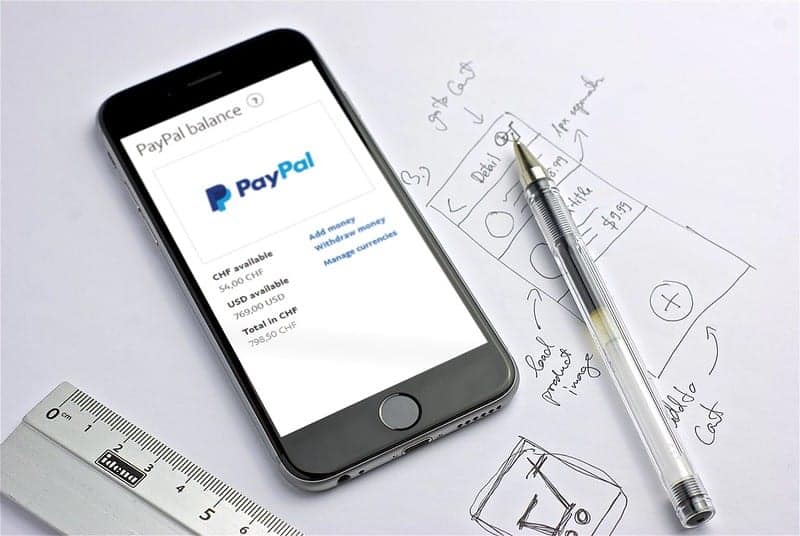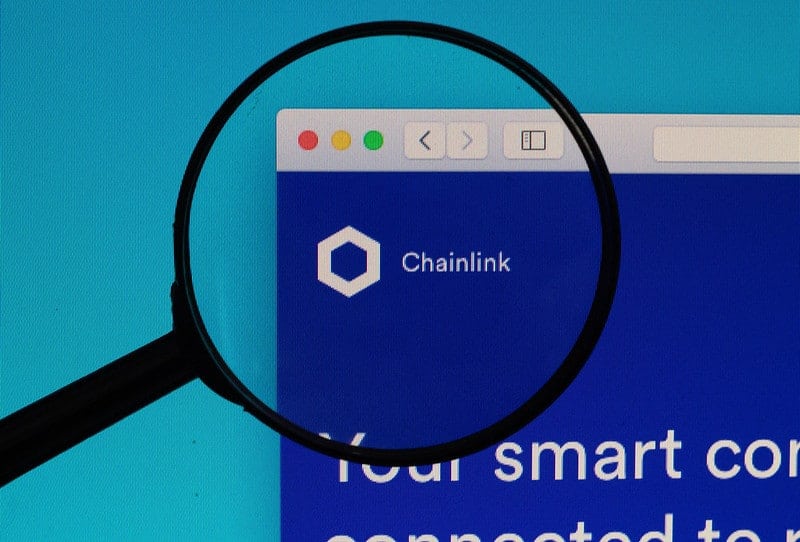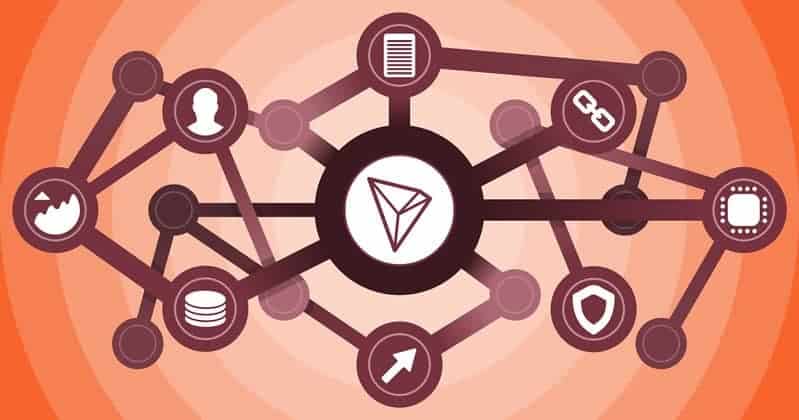In this issue
- Will PayPal and Venmo allow crypto sales?
- FC Barcelona kicks off fan token
- USDC stablecoin leaves Ethereum for Algorand blockchain
- In China: National blockchain platform uses Chainlink. Could Justin Sun eclipse TRON 4.0?
- VC highlights in Thailand and Singapore
From the Editor’s Desk
Dear Reader,
In a globalized world, supply chains are critical. If the first half of this year, the Year of Covid-19, hasn’t proven that so starkly, it’s possible that an intensifying U.S.-China trade war will demonstrate it without a shadow of a doubt. But let’s not let negativity or pessimism be the mark of this missive. Instead, it truly is an incredible time to mark for blockchain. Why? China is getting its supply chain game together with BSN. Blockchain Service Network is part of President Xi Jinping’s national blockchain initiative announced in late 2019. China has continued to build out the architecture, and building onramps to public blockchains like Ethereum, and integrating Chainlink, the middleware that sources data off-chain and brings it onto the blockchain. What that essentially means is that fewer human hands touch the data in the supply chain. Less human intervention, which preserves the integrity of the data. As the world descends more into distrust of each other, could blockchain technology be the apolitical bridge that allows us to at least trust the data of business-working-enterprise relationships we need to survive and thrive?
From rumors of PayPal’s potential inclusion of crypto to pay for real-world goods and services to fans of FC Barcelona snapping up tokens to engage with their favorite soccer team… enterprise adoption is accelerating. The Current Forkast this week remains hot on this side of the hemisphere and around the decentralized globe. Let’s see where the second half of this year takes us. Stay safe out there.
Until the next time,
Angie Lau,
Founder and Editor-in-Chief
1. Will PayPal and Venmo soon offer crypto trading?

By the numbers: PayPal — 1,950% increase in Google search volume.
The rumor mill is churning as an unnamed source tells Coindesk that PayPal and Venmo “are going to allow buys and sells of crypto directly.” According to the report, a second source confirmed that PayPal could be providing direct cryptocurrency trading — in as soon as three months.
- PayPal has since declined to confirm or deny these reports, even telling another media outlet: “PayPal does not comment on rumors or speculation.”
- PayPal has 325 million active accounts, worldwide, in the first quarter of 2020. The leading online payment provider opted to withdraw from Facebook’s Libra Association last October.
Forkast.Insights | What does it mean?
Let’s mark this one as unlikely.
For years, PayPal has been vehemently opposed to its users buying and selling crypto using its platform. For PayPal, it would be a massive headache with too many vectors for fraud: compromised accounts, malicious chargebacks, the list goes on. Currently, PayPal accounts that are suspected of trafficking in bitcoin or other cryptocurrencies are quickly banned, and recourse is a long tricky process. Of course PayPal is still used as a medium of payment for P2P crypto transactions on venues like LocalBitcoins, but the margins on the exchange reflect the risk (common instructions from sellers: don’t mention crypto).
But that’s not to say PayPal doesn’t have an interest in blockchain. PayPal still has payment rails to the traditional banking system that are often decried as inefficient. While the company can promise a turnaround time of one business day to move funds from a customer’s PayPal account to their bank account in the U.S. or Canada, that’s not the case in Asia. Usually it takes 3-5 days. PayPal, by virtue of its job posting, could be interested in using stablecoins or developing a rival to Ripple to solve this pain point.
Even though PayPal will likely not allow retail customers to purchase crypto directly, it doesn’t necessarily mean that it won’t incorporate the technology into its stack — there are big benefits in using in using crypto to speed up the remittance process, and keeping it safe in the software stack out of the hands of the retail side can keep problems at bay. This is a good object lesson of how blockchain and crypto have evolved to be more than a commodity to punt around.
2. Soccer fans snap up FC Barcelona tokens

By the numbers: FC Barcelona token — 850% increase in Google search volume.
FC Barcelona ($BAR) Fan Token sold out in less than two hours to generate US$1.3 million. According to sports and entertainment blockchain fintech provider Chiliz, the demand for $BAR on fan voting and rewards app Socios.com and tokenized sports exchange Chiliz Exchange exceeded supply by 500%.
- Chiliz also provides “fan tokens” for other prominent sports teams and leagues, including the Ultimate Fighting Championship (UFC) and Italian Serie A football club Juventus.
- Tokens are used to vote in polls, which are also entries for chances to win rewards such as VIP guest entries to matches and meeting players.
Forkast.Insights | What does it mean?
FC Barcelona’s token, which has elements of a governance token, is an interesting concept that no doubt walks a tightrope between a token offering and a security. After all, decisions made by holders of $BAR — which would let holders vote on such decisions as what music to play when Barcelona scores a goal, and how to paint the team locker room — would not be binding, while shareholders’ votes would be. However, this is nonetheless a unique play to build fan engagement: even though professional sports teams are usually run by oligarchs or multinational corporations, fans like feeling that they have a stake in the team. By giving fans a way to voice their opinion on the team’s direction, they’ll be more engaged, more likely to show up at games, and be a team signal booster on social media.
The funds raised by FC Barcelona via this token sale is immaterial to the club’s yearly revenue, and for professional sports teams this is unlikely to be a notable revenue channel. That being said, eSports teams, a sports category on the rise, have much lower operating costs, and a token sale in the same range would be a bigger benefit to its balance sheet. In addition, the demographics of eSports would have a better overlap with those who would be receptive to a token sale.
In the end, this is a marketing gimmick that will likely generate a moderate increase in fan engagement while producing a rounding error for FC Barcelona’s coffers. But it also serves as an excellent reference customer to show how tokens can be used in the future for professional sports — particularly those that might count revenue in the high hundreds of thousands versus billions.
3. USDC leaves Ethereum for Algorand blockchain

By the numbers: USDC — 1,250% increase in Google search volume.
USDC, the world’s second most popular stablecoin by market cap that is backed by the U.S. dollar on a 1:1 basis, is officially moving away from the Ethereum blockchain to integrate into the Algorand blockchain. The Centre Consortium also announced a framework for multi-chain support on USDC, which would allow other blockchains to “leverage the foundation and standards that have been created behind USDC.”
- Centre aims to enable wider adoption of “digital dollars” built around USDC by allowing stablecoins on Centre’s protocols to be available on multiple blockchains while providing interoperability.
- USDT — or Tether, the world’s leading stablecoin — has already implemented a multi-chain structure and lives on Algorand, Ethereum, Tron, EOS, OMG Network, Liquid Network, and Omni.
- As Algorand uses the “proof of stake” model, using it as USDT’s primary blockchain would create efficiencies that would build value when compared to its competitors
- The Centre Consortium is co-founded by Coinbase and Circle, while accounting firm Grant Thornton audits the U.S. dollar reserves for USDC on a monthly basis.
Forkast.Insights | What does it mean?
Some might view USDC’s push for chain interoperability as a condemnation of the Ethereum blockchain, which has become the grand workhorse of the industry. But competition is key in the marketplace, and serious endeavors to mature other blockchains benefits the industry as a whole. Algorand, which uses proof of stake, was built from the ground up to work with decentralized finance products so there will be less gremlins in the code.
Tether, or USDT, also lists its token on a number of different blockchains including Ethereum and Algorand (as well as multiple other blockchains). However, the vast majority of USDT still reside as Ethereum ERC-20 tokens; the interest in Algorand just isn’t there for Tether users. USDC might strike a different tune since it tends to be more enterprise-focused than Tether, which would make the move to a blockchain better geared for institutional-grade payment processing a better fit.
Centre’s move to make USDC interoperable with as many blockchains as possible, while letting Grant Thorton have regular looks at the books, builds a lot of confidence in the technology as something that’s enterprise-ready. If this leads to USDC being integrated in more technology stacks for fund remittances (like PayPal, or, even better, one of its competitors), it will in turn result in more institutional buy-in for blockchain by legacy financial enterprises.
But just a word of caution. While this will lead to a proliferation of “digital dollars” in circulation, there is probably not much reason for digital currency advocates to get too excited. These are all private endeavors and not stepping stones to a central bank digital currency. A U.S. CBDC is still unlikely to happen any time soon.
4. In China: blockchain service network adopts Chainlink. Will Justin Sun’s notoriety eclipse TRON 4.0?

China’s national blockchain platform BSN will integrate Chainlink, the blockchain middleware, into its network, according to Chainlink’s recent announcement. According to Dragonfly Capital’s Haseeb Qureshi, BSN will also support public blockchains like Ethereum
- This will allow governments and firms to exchange information in the real world and their BSN applications using Chainlink oracles via the IRITA interchain service hub.
- Launched on April 25 this year, BSN is China’s ambitious nationwide blockchain project, aimed at building a global infrastructure network to help companies produce all kinds of blockchain applications faster and cheaper.
- By integrating the Chainlink oracle network into BSN, it helps BSN incorporate off-chain, real-world data in a secure and reliable manner.
Forkast.Insights | What does it mean?
As China’s Blockchain Service Network continues to mature, its software stack continues to improve.
While the architects of BSN have favored permissioned chains to date, ultimately integration with public chains is a must. If the goal of BSN is a secure, immutable platform for data-sharing, interoperability with other blockchains is a must, especially those that are widely used by enterprise (like Ethereum). Furthermore, any blockchain needs data for validation and a source of truth. Chainlink allows for oracles (effectively, a blockchain version of an API, or application programming interface), that is, data sources from things like IoT sensors, to write data directly to the blockchain.
Why is this needed? At the core of BSN are smart contracts to automate processes and ensure a transparent and equitable execution of a process. To minimize human intervention as much as possible, data sources — not humans — would be responsible for pulling the trigger.
If BSN powers a logistics dApp for the food industry, it’s going to rely on oracles to transmit data to validate the position of the truck carrying the goods, on-board temperature, and acceptance by the vendor. Once the smart contract is triggered to release the funds, another oracle would interface with the payment processor used by both parties to release the funds.
With this infrastructure in place, all that needs to happen next is the adoption by industry. Smart contracts have been a “paper dragon” for years — highly effective in theory, but not often given a chance to prove themselves in a real-world enterprise deployment. But with BSN, all of this should now be ready for prime time.

TRON 4.0 will unveil on July 7, but Chinese netizens have been paying more attention to the company’s flamboyant founder, Justin Sun.
- Sun announced TRON 4.0 through an open letter on Weibo, China’s equivalent of Twitter, to explain that the updated blockchain platform would provide a more business-friendly public chain with new features like smart contracts.
- Chinese netizens’ reactions have been mixed. Some expressed open admiration for Sun. But Sun’s haters seem equally plentiful and passionate and are already claiming the new features — which no one has actually seen or used yet — are not practical and just another play by Sun for attention.
Forkast.Insights | What does it mean?
In theory, TRON has a killer use-case when it comes to decentralizing the distribution of rich media content and providing a pathway for monetization. As media’s business model has changed dramatically over the past decade, one set of gatekeepers has been replaced with another. Although this set of gatekeepers is less risk averse with content, and the lower capital costs of distribution means that there’s more to demographic targeting than the lowest-common denominator, institutionalized censorship is still common. YouTube, for instance, demonetizes political themed content creators at the request of the crowd. Netflix, too has removed content in certain countries by government fiat.
This new model is a step in the right direction, but not perfect. While the capital costs of running a service like Netflix or YouTube are less than a traditional broadcaster, they are still high, meaning that barriers exist and not everyone can start a competitor.
TRON, however, could show there’s an easier way. Using the tried-and-true protocol BitTorrent — which TRON now owns, and which has been used for over a decade to replace the traditional hub-and-spoke model of servers and clients to distribute large amounts of data — media gatekeepers can be totally replaced as content is monetized, via tokens, and distributed without the need for them.
But none of this is happening. The actual dApps currently developed on the TRON platform are a mix of games and gambling platforms. Nowhere in this crude rubble are actual apps that use TRON to its real potential. Instead, TRON is better defined as a vehicle for Justin Sun — and he encourages it. For the platform to mature and evolve, it has to be less about a cult-of-Sun and more about proving a real, actionable product.
5. Fintech funding highlights in Thailand and Singapore
Omise — Thailand, series C, US$80 million
Thai payment platform Omise announced that it has closed an $80 million series C funding round, raising its total funding to over $100 million dollars. The round was led by Japanese venture capital firm SPARX Group and SCB 10X, the research investment subsidiary of the Siam Commercial Bank. The Siam Commercial Bank is the largest bank in Thailand, a nation with the second largest rate of growth in mobile payments for Asia and the Middle East, according to a 2019 PWC report. Other Tokyo-based firms, including Toyota Financial Services and Sumitomo Mitsui Banking Corporation, also contributed to the round. In a statement, the company stated that the funds will go toward expanding their Omise “payment gateway,” which is used to conduct cross-border and ecommerce transactions via a distributed ledger. The firm currently serves customers in Thailand, Japan and Singapore via a mobile app.
Tonik — Singapore, series A, US$21 million
Singaporean startup bank Tonik announced it has closed a $21 million dollar series A funding round. That brings its total funding to $27 million, following a venture round in late February. The bank has attracted interest from institutional VC firms Sequoia Capital and Point72 Ventures, both of which are based in the United States. Tonik is led by Greg Krasnov, the founder of Platinum Bank, one of Ukraine’s top financial institutions until it went bankrupt in 2017. Tonik promises “simple consumer payment, savings and borrowing solutions” for customers as an online-only bank serving the Southeast Asia region.
Forkast.Insights | What does it mean?
Fintech companies that utilize blockchain tech to increase payment efficiency aren’t new. Neither are online-only banks. But the regional difference that Southeast Asia poses, with dramatic increases in tech adoption and mobile payment usage, could use a second look. What would be interesting to see in the future is whether these banks can provide financial products more advanced than a credit card or copycat payment service. Could it be that international investment opportunities, in the stock or bond market, might become available to investors in the so-called “Tiger Cubs” (Asia’s fast-growing economies that aren’t yet considered developed)? Or will financial competition from firms within Asia’s mature Tigers change things up as Southeast Asia develops solutions right from the blockchain era?
Whatever the case may be, it’s clear that, with the coronavirus restricting investor capital, the claws are out.




